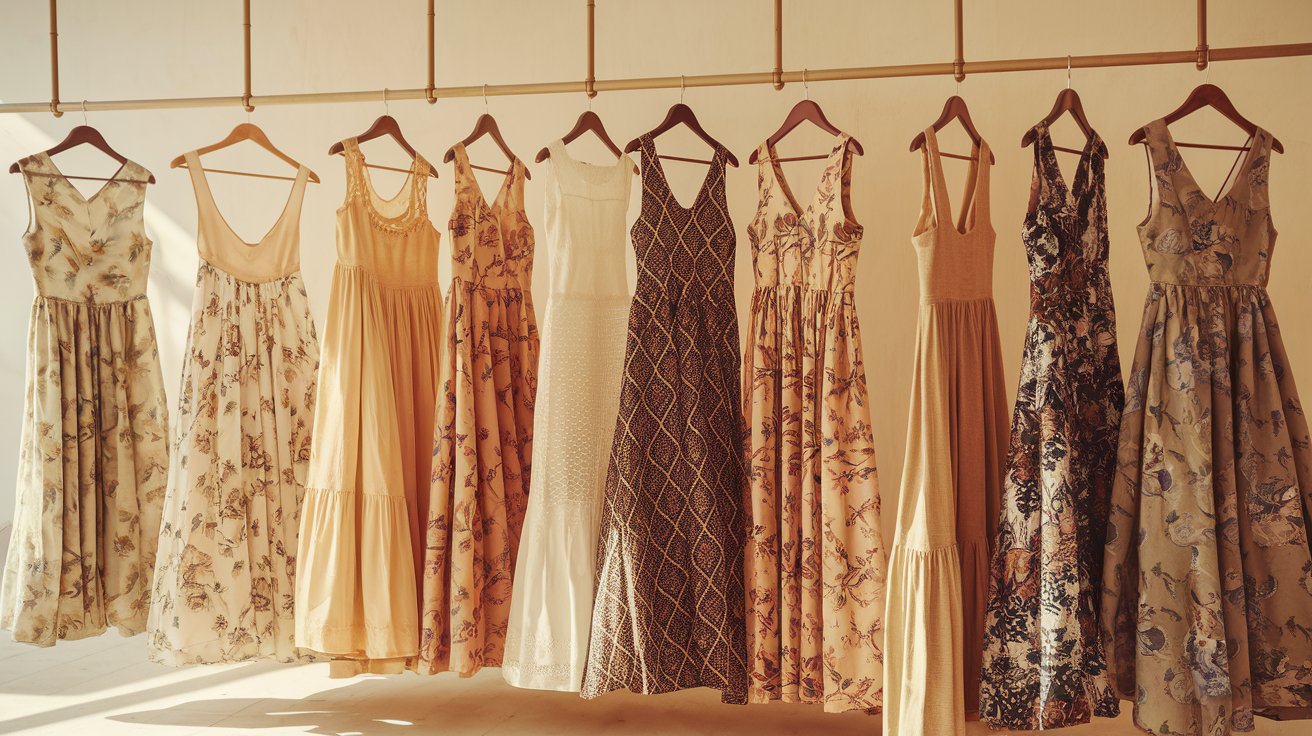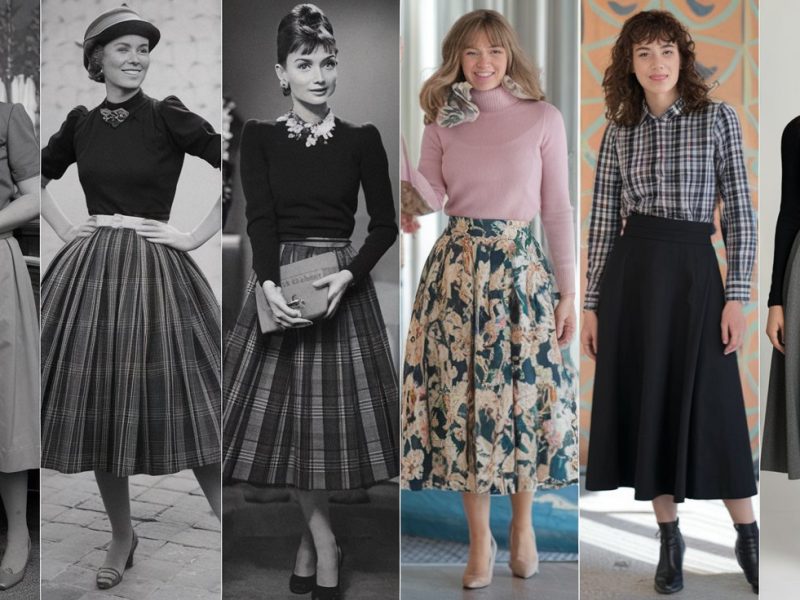The Rise of the Maxi Dress and Its Global Influence
Clothing has always told stories—about history, identity, and even quiet rebellion. Today, one particular piece is once again stealing the spotlight: the maxi dress. It’s visible on the runways of Paris, at Rio’s lively street festivals, and in the effortless posts of Gen Z creators on TikTok. Flowing, comfortable, and graceful, it answers a common desire—to feel stylish and at ease all at once.
- The maxi dress, originally popular in the 1960s, is back—fueled by nostalgia and social media.
- It blends global influences, from California’s boho style to abaya-inspired designs from the Middle East.
- Trends like sustainability, gender inclusivity, and body positivity are shaping its return.
- According to Global Industry Analysts, the global market for long dresses is expected to grow by nearly 6% each year until 2030.
For anyone shaping a personal brand, whether you’re a content creator or part of a clothing business, the maxi dress reflects bigger cultural movements: a growing demand for inclusive style, environmentally conscious choices, and fashion that bridges traditions across continents.
A Look Back: From the 1960s to the Digital Era
In the mid-1960s, younger generations began to break away from rigid silhouettes of the past. The maxi dress, embraced by the hippie movement, became a symbol of freedom. In 1976, Yves Saint Laurent took the trend mainstream with his “Russian Collection,” showcasing ankle-length gowns on the runway. By the 1990s, the look made a comeback through Kate Moss and boho fashion—mixing silk and bold patterns.
As Instagram rose to popularity in the 2010s, the maxi’s appeal expanded further, worn by people of every background and gender. Each post shared more than just fabric; it expressed individuality, culture, and attitude.
Why Gen Z and Millennials Love the Long Look
Scroll through any social feed, and you’ll spot the maxi dress twirling in short videos. For Gen Z, it serves as a canvas for self-expression—some choose clean, neutral linen; others go bold with neon and tie-dye. This personal touch has helped drive sales of single-piece fashion.
One clear example is Amazon’s recent report, where sales of floor-length summer dresses surged by over 80% in just one year. The surge is partly driven by short-form content, fashion hauls, and relatable outfit tutorials. The top three traits people highlight? Comfortable, easy to style, and affordable.
How Media and Events Boost the Trend
Award shows like the Met Gala and Cannes Film Festival regularly showcase stars dressed in luxurious flowing gowns. When Zendaya or Deepika Padukone steps out in a striking ensemble, it instantly becomes a hot topic. Fans quickly recreate those looks using thrifted curtains or secondhand materials, while popular brands offer budget-friendly versions made from rayon instead of silk.
In this way, social media acts as a bridge between high fashion and streetwear—making elegance more accessible.
Cultural Influence from North Africa to Japan
In North Africa, the traditional jalabiya has taken on modern embroidery and longer cuts. In South Asia, there’s a kurta-maxi fusion allowing women in Mumbai to move freely while honoring heritage designs. Over in Tokyo, pareo-style maxi dresses are gaining popularity, inspired by the layering of kimono.
These interpretations prove that a single garment can carry centuries of adaptation, storytelling, and imagination.
A Greener Alternative for Fashion Lovers
As awareness grows about the environmental costs of fast fashion, more designers are switching to materials like Tencel and organic cotton. The maxi dress works in all seasons—it can be layered in the cold or worn solo in warmer months. That means fewer wardrobe changes and smarter buying habits.
Benefits of the Maxi Dress in Sustainable Living
- Lasts longer: Quality stitching helps it stay wearable for years.
- Reduces fabric waste: Most pieces follow a single pattern, cutting down on scraps.
- Highly adaptable: Works as beachwear or office attire depending on accessories.
Even with just these few points, it’s clear the maxi dress fits well into a lifestyle that prioritizes mindful consumption.
A Look at the Business Behind the Fabric
Allied Market Research projects that revenue from long dresses will reach USD 20 billion globally by 2030. But it’s not just big brands benefiting from the trend.
In Lagos, small tailors are using Facebook Marketplace to sell Ankara maxi dresses. In Mexico City, a woman named María Hernández crafts linen gowns and sells them on Etsy, pairing each sale with a handwritten note about the artisan community that helped make it. When buyers support these makers, they’re not only choosing a dress—they’re supporting hands that stitch and stories that matter.
Style Stories from Across the Globe
New York: Aaliyah, a fashion student, shared how she saves money by styling one maxi dress in multiple ways throughout the week.
Auckland: Tane, a Māori content creator, wears his maxi with traditional tukutuku patterns to celebrate heritage while reaching global audiences.
Marrakesh: Fatima sells caftan-style maxis and adds QR codes on the label. A quick scan reveals a short video where she explains the meaning behind the design.
Seoul: Jisoo wears a denim maxi for street dance videos, making a statement about fashion beyond gender labels.
Paris: Étienne, a vintage collector, found a 1970s maxi at a flea market. After restoring it, he shared the transformation online—earning a million views in just a day.
A Tool for Personal Expression
Not everyone feels at ease in short dresses, but the maxi offers comfort and confidence across all body types and ages. Raise the collar or drop the neckline, and the entire mood shifts. Choose all-white for a soft presence or bold prints for a louder impression. Walking down the street, that flowing fabric turns each step into a quiet performance.
Looking Ahead: What’s Next for the Maxi Dress?
Designers continue to experiment with new materials. At the Copenhagen Fashion Summit, one dress was made from pineapple fibers. In San Francisco, a start-up introduced biodegradable sequins that break down after five years.
Surveys show changing attitudes too. Statista’s 2024 research revealed that 35% of Gen Z in the U.S. are open to wearing clothing without gender tags. The maxi dress fits right into this shift—loose, expressive, and versatile enough for everyone.
Each fold of a maxi dress holds more than just thread. It carries stories—of culture, community, and personal style. Choosing this garment isn’t just about fashion; it’s about connection. From the hands that craft it to the people who wear it with pride, the maxi dress proves that style can be a bridge between individuals, cultures, and generations.


